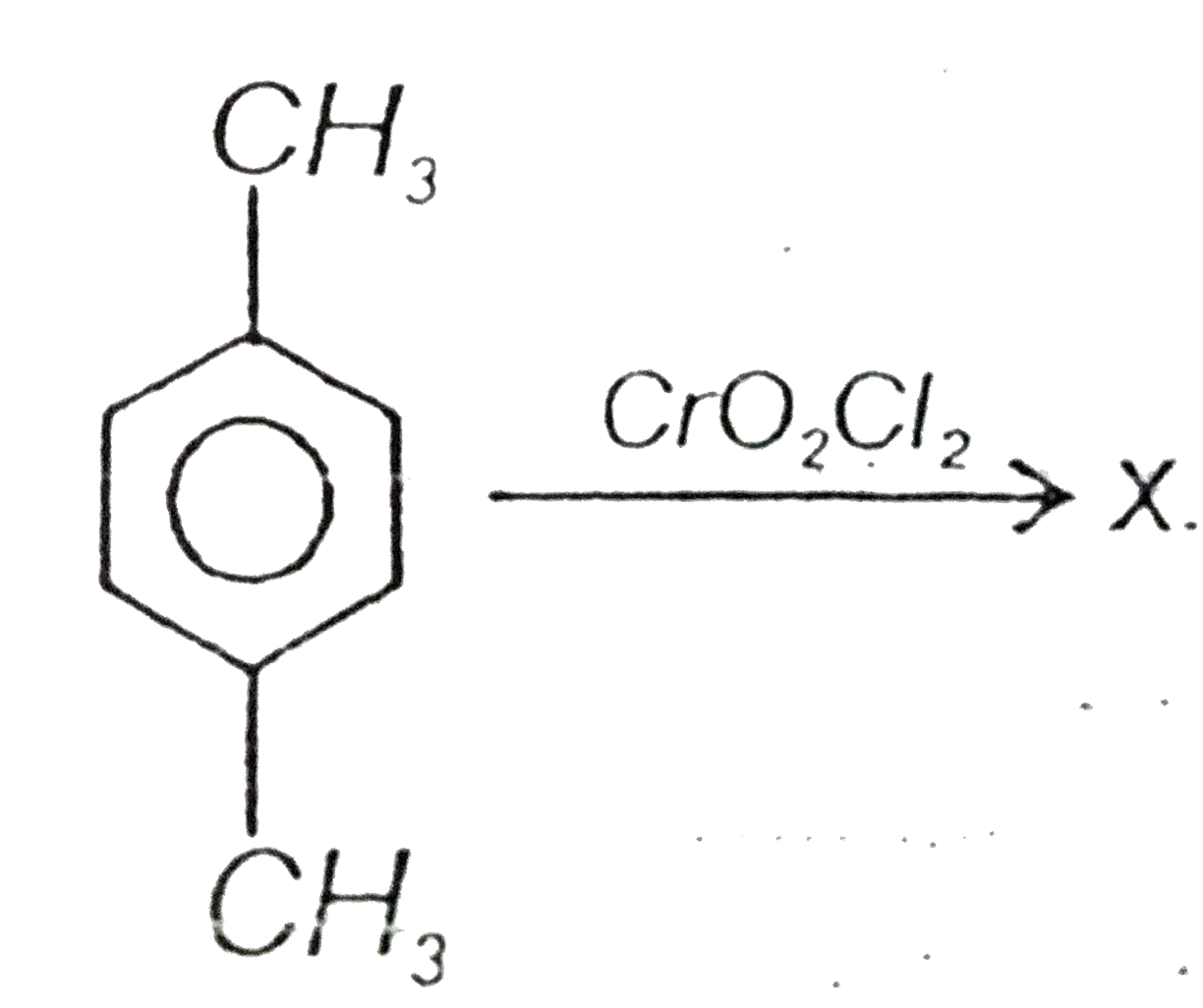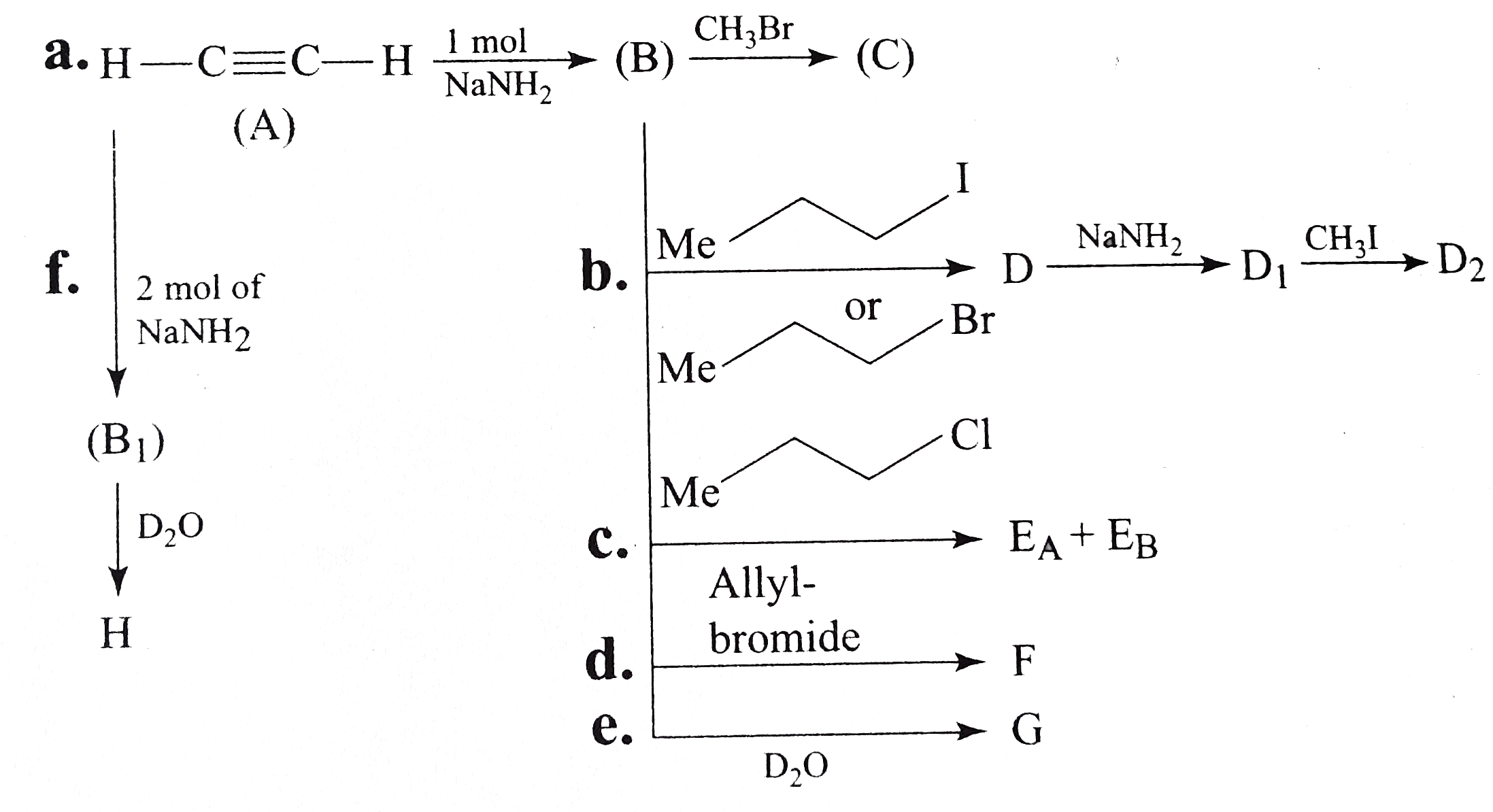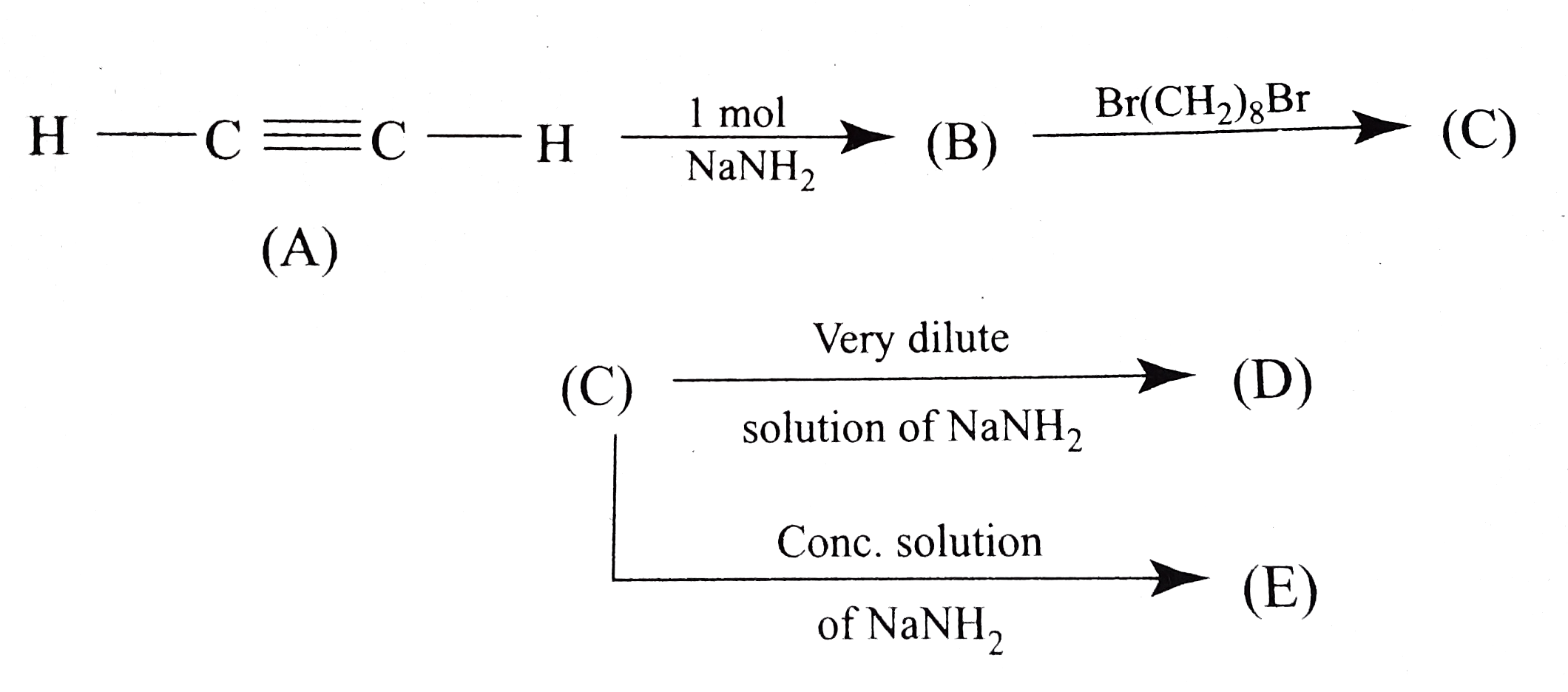Complete the following reactions :
2H−O∣∣C−HConc.KOH−−−−−→
To complete the reaction given in the question, we will analyze the reaction of formaldehyde (HCHO) in the presence of concentrated KOH, which is known as the Cannizzaro reaction.
1. Identify the Reactants:
The reactants are two moles of formaldehyde (HCHO) and concentrated KOH.
2HCHO+Conc. KOH
2. Understand the Cannizzaro Reaction:
The Cannizzaro reaction occurs when aldehydes that do not have alpha-hydrogens undergo disproportionation in the presence of a strong base like KOH. In this reaction, one molecule of aldehyde is oxidized to a carboxylic acid, while another molecule is reduced to an alcohol.
3. Write the Reaction:
In the presence of concentrated KOH, one mole of formaldehyde will be oxidized to formic acid (HCOOK) and the other mole will be reduced to methanol (CH3OH).
2HCHOConc. KOH−−−−−−−→HCOOK+CH3OH
4. Identify the Products:
- The oxidized product is potassium formate (HCOOK).
- The reduced product is methanol (CH3OH).
5. Final Reaction Equation:
Thus, the complete reaction can be summarized as:
2HCHO+Conc. KOH→HCOOK+CH3OH
The reactants are two moles of formaldehyde (HCHO) and concentrated KOH.
The Cannizzaro reaction occurs when aldehydes that do not have alpha-hydrogens undergo disproportionation in the presence of a strong base like KOH. In this reaction, one molecule of aldehyde is oxidized to a carboxylic acid, while another molecule is reduced to an alcohol.
In the presence of concentrated KOH, one mole of formaldehyde will be oxidized to formic acid (HCOOK) and the other mole will be reduced to methanol (CH3OH).
- The oxidized product is potassium formate (HCOOK).
- The reduced product is methanol (CH3OH).
Thus, the complete reaction can be summarized as:
Similar Questions
Knowledge Check
- Question 1 - Select One
Compound having −O∣∣C−CH3 group reacts rapidly with halogen in presence of a base to form haloform. The reaction is known as haloform.
R−O∣∣C−CH3X2+ϴOH−−−−→R−O∣∣C−ϴO+CHX3
Mechanism

Consider the following reactions:
Reaction I →Ph−O∣∣C−CH3Cl2,ϴOH−−−−→Ph−O∣∣C−ϴO+CHCl3
Reaction II →Ph−O∣∣C−CD3−Cl2,ϴOH−−−−→Ph−O∣∣C−ϴO+CDCl3
Which of the following is correct comparison of the rate of reaction I and II?ArI>rIIBrI>rIICrI=rIIDCannot be determined - Question 2 - Select One
How many products will obtain in the following reaction?
Ph−CHO++O∣∣C−HNaOH−−−→A2B3C4D1
Complete the following reactions:
(i) CH3−CH3∣C∣Cl−CH2CH3alcKOH−−−−→ΔAO3−−−−−→Zn/H2O(B+C)
(ii) CH3ICH−CH3alcKCN−−−−→A(i)SnCl2/HCl−−−−−−−−−−−−→(ii)H2O.OH.H2O2B
(iii) HCNHCl/AlCl3−−−−−−→A(i)C6H6Δ−−−−−−−−−−→(ii)(H2O)/H−B
(iv) View Solution
View SolutionComplete the following reactions :
C2H4+H2OH2SO4−−−→View SolutionComplete the following reactions:
PhCHO+CH3NO2ΘOH−−→Δ(A)View SolutionComplete the following reactions: a. H−C(A)≡C−H1mol−−−−→NaNH2(B)CH3Br−−−→(C)

g. H−C≡C(A)−H1mol−−−−→NaNH2(B)Br(CH2)8Br−−−−−−−−→(C)
 View Solution
View SolutionComplete the following reactions :
C2H5Br+KOH(alc)Δ−−→View SolutionComplete the following reactions:
Benzene(A) Ac2O−−−−→+AICI3 (B) (i)MeMgBr−−−−−−−→(ii)H3O(+) (C) Conc.H2SO4 (D) 1.BH3/THF−−−−−−−−−−→2.H2O2/O(−)H (E)View Solution

